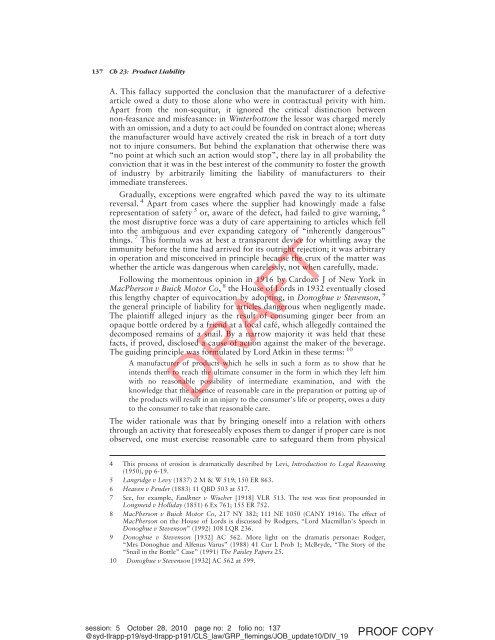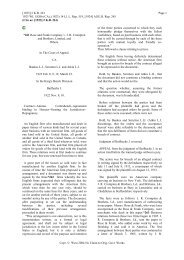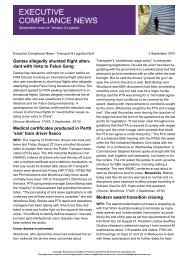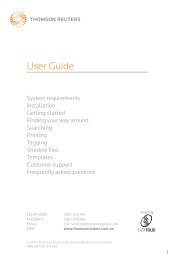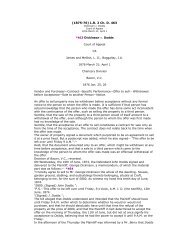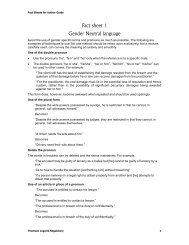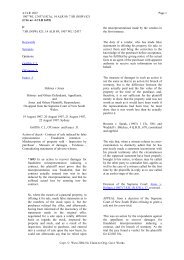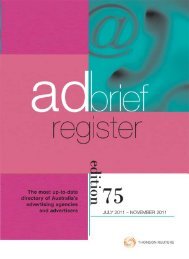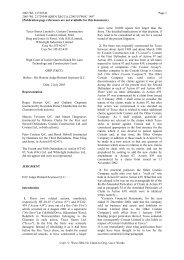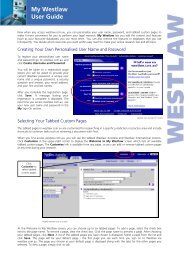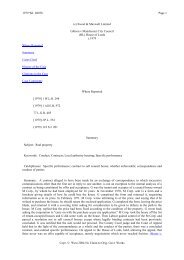Chapter 23: Product Liability - Thomson Reuters
Chapter 23: Product Liability - Thomson Reuters
Chapter 23: Product Liability - Thomson Reuters
Create successful ePaper yourself
Turn your PDF publications into a flip-book with our unique Google optimized e-Paper software.
137Ch <strong>23</strong>: <strong>Product</strong> <strong>Liability</strong>A. This fallacy supported the conclusion that the manufacturer of a defectivearticle owed a duty to those alone who were in contractual privity with him.Apart from the non-sequitur, it ignored the critical distinction betweennon-feasance and misfeasance: in Winterbottom the lessor was charged merelywith an omission, and a duty to act could be founded on contract alone; whereasthe manufacturer would have actively created the risk in breach of a tort dutynot to injure consumers. But behind the explanation that otherwise there was“no point at which such an action would stop”, there lay in all probability theconviction that it was in the best interest of the community to foster the growthof industry by arbitrarily limiting the liability of manufacturers to theirimmediate transferees.Gradually, exceptions were engrafted which paved the way to its ultimatereversal. 4 Apart from cases where the supplier had knowingly made a falserepresentation of safety 5 or, aware of the defect, had failed to give warning, 6the most disruptive force was a duty of care appertaining to articles which fellinto the ambiguous and ever expanding category of “inherently dangerous”things. 7 This formula was at best a transparent device for whittling away theimmunity before the time had arrived for its outright rejection; it was arbitraryin operation and misconceived in principle because the crux of the matter waswhether the article was dangerous when carelessly, not when carefully, made.Following the momentous opinion in 1916 by Cardozo J of New York inMacPherson v Buick Motor Co, 8 the House of Lords in 1932 eventually closedthis lengthy chapter of equivocation by adopting, in Donoghue v Stevenson, 9the general principle of liability for articles dangerous when negligently made.The plaintiff alleged injury as the result of consuming ginger beer from anopaque bottle ordered by a friend at a local café, which allegedly contained thedecomposed remains of a snail. By a narrow majority it was held that thesefacts, if proved, disclosed a cause of action against the maker of the beverage.The guiding principle was formulated by Lord Atkin in these terms: 10A manufacturer of products which he sells in such a form as to show that heintends them to reach the ultimate consumer in the form in which they left himwith no reasonable possibility of intermediate examination, and with theknowledge that the absence of reasonable care in the preparation or putting up ofthe products will result in an injury to the consumer’s life or property, owes a dutyto the consumer to take that reasonable care.DRAFTThe wider rationale was that by bringing oneself into a relation with othersthrough an activity that foreseeably exposes them to danger if proper care is notobserved, one must exercise reasonable care to safeguard them from physical4 This process of erosion is dramatically described by Levi, Introduction to Legal Reasoning(1950), pp 6-19.5 Langridge v Levy (1837) 2 M & W 519; 150 ER 863.6 Heaven v Pender (1883) 11 QBD 503 at 517.7 See, for example, Faulkner v Wischer [1918] VLR 513. The test was first propounded inLongmeid v Holliday (1851) 6 Ex 761; 155 ER 752.8 MacPherson v Buick Motor Co, 217 NY 382; 111 NE 1050 (CANY 1916). The effect ofMacPherson on the House of Lords is discussed by Rodgers, “Lord Macmillan’s Speech inDonoghue v Stevenson” (1992) 108 LQR <strong>23</strong>6.9 Donoghue v Stevenson [1932] AC 562. More light on the dramatis personae: Rodger,“Mrs Donoghue and Alfenus Varus” (1988) 41 Cur L Prob 1; McBryde, “The Story of the“Snail in the Bottle” Case” (1991) The Paisley Papers 25.10 Donoghue v Stevenson [1932] AC 562 at 599.session: 5 October 28, 2010 page no: 2 folio no: 137@syd-tlrapp-p19/syd-tlrapp-p191/CLS_law/GRP_flemings/JOB_update10/DIV_19PROOF COPY


